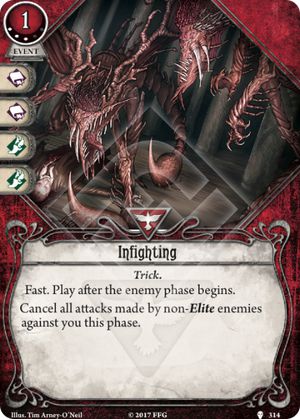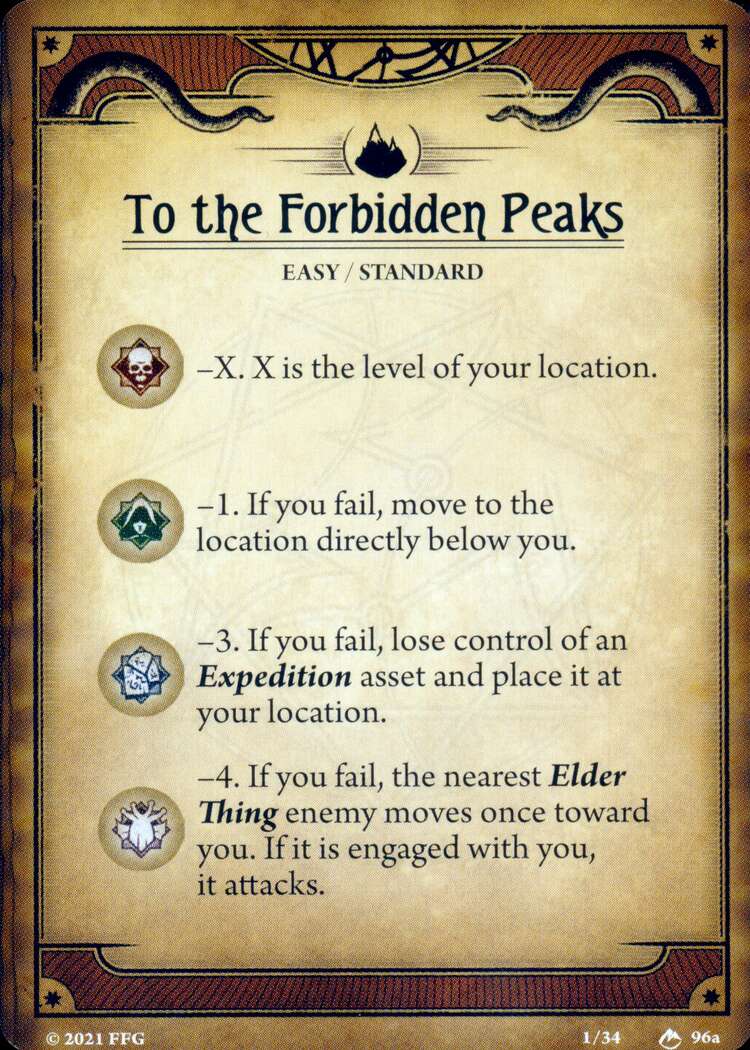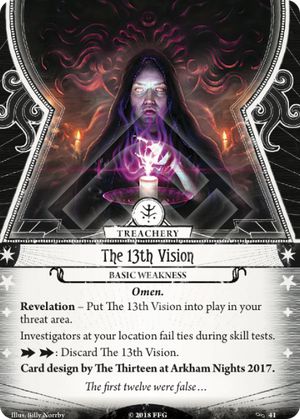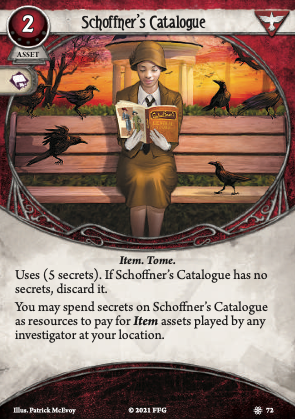
I think this might be quite good on Daniela Reyes! Since her ability works even when the attacks are cancelled, you could play this when engaged with a bunch of enemies, they deal no damage to you but you still deal 1 damage or evade them.

I think this might be quite good on Daniela Reyes! Since her ability works even when the attacks are cancelled, you could play this when engaged with a bunch of enemies, they deal no damage to you but you still deal 1 damage or evade them.

Might be considered a spoiler by some, but is probably an important rule clarification for others, in particular new players: Better double check Appendix III of the Rules Reference before playing this game.
Important of note is, that damage and horror from traumata are taken in step 2 (and only at that time, Voice of the Messenger for example does not dish out immediately an additional damage or horror from the trauma you take), while reading the scenario introduction is step 9. So, if you happen to take a trauma in the scenario introduction, you won't start with the additional damage or horror until the game after this one. That's different to all of the in between traumata you might gain in The Forgotten Age, because they happen in interludes, and hence after the previous game, before setting up the next one.

This card has a bizarre interaction with Lucky! and cards that care about succeeding by 2 or more, like Sharp Vision. Let's say you're up by 4 on an investigate test where you've committed Sharp Vision. If you draw the -2, hooray, you succeeded by 2 and you pick up an additional clue. If you get the -4, you still pass the test but no extra clue for you. Except if this card is out at your location, then no wait, you fail instead. That opens up the window to play Lucky!, giving you +2 skill value, and turning a failure into a succeed by two, netting you both clues. (Note that Lucky! (3) can also turn a failure into a succeed by two, but hey, that's 3 XP). It's a little like Daring Maneuver in that way, but just keep an eye open for this interaction.

Can you use Knowledge is Power to get a fast 5 resources to pay for an item? And as an option discard the catalog for a fast card draw?
Also can you do this as Lola Hayes in Seeker role to target any color item?
Thanks.

Nothing stops you from committing Dreams of the Deep to another investigator's test (the same is true of Arrogance by the way, which is very useful to be aware of especially in the mythos phase), so even in rounds were Silas's stats don't shine it should be possible to get rid of this. There are almost always locations to investigate and there's generally going to be someone investigating them at a decent value. It can even be worth taking 2 damage to move to them (you'll take the damage in this case because Dreams triggers at the end of your turn, not the end of the round) to give them multiple attempts to clear it. In a roundabout way, it can be compared to a double-action discard weakness.
Flashlight (or Old Keyring) also works well if you can find a shroud 2- location (and is a solid option in general for any low-book investigator to contribute to the game), as that neutralizes the effect of the negative icons.
Also note that you don't have to commit it to any given skill test. If there's only a round or two left before the scenario ends anyway, it's very possible to just tank the damage.
When deciding whether to use box-or-book signatures, it's also worth noting that this weakness gets softer the more investigators there are, as there are more people to commit it to AND a greater chance of seeing an enemy the round after you draw it.